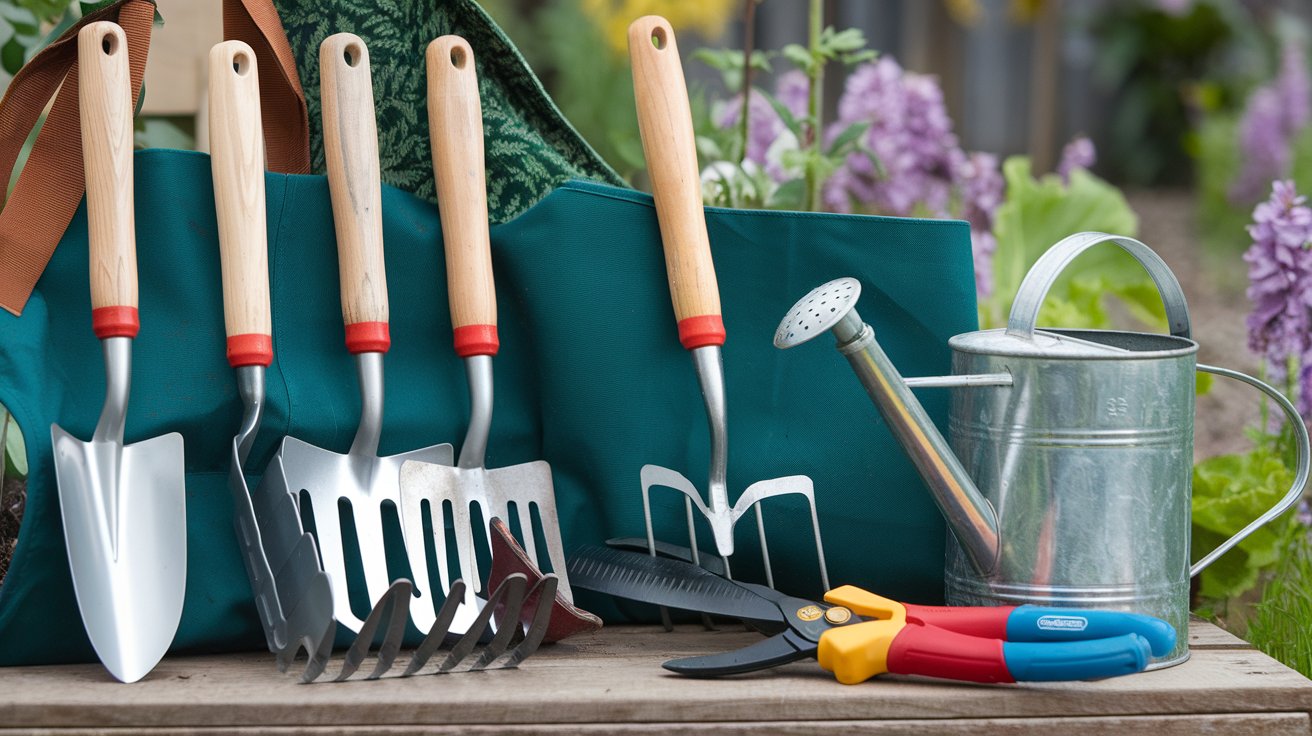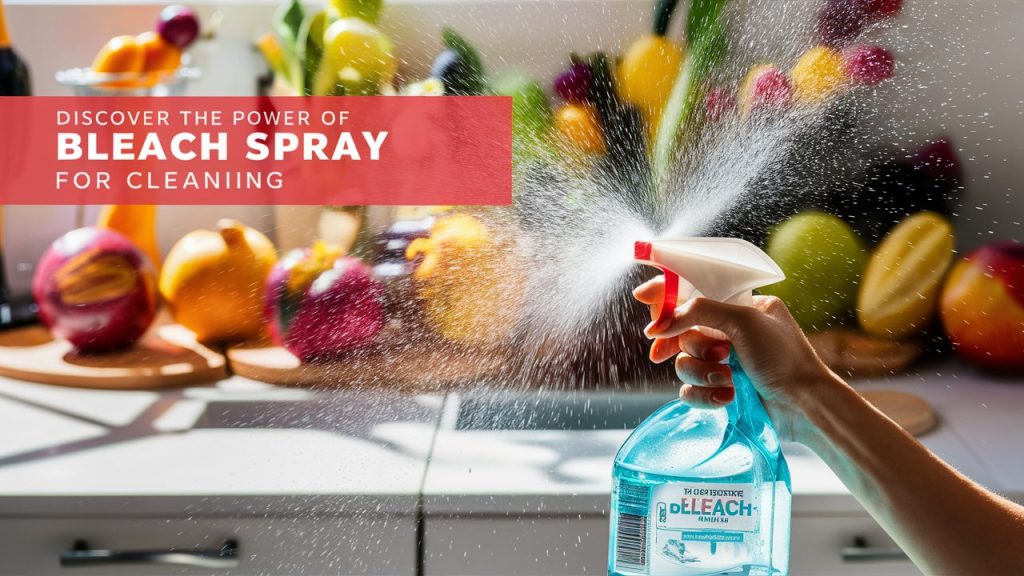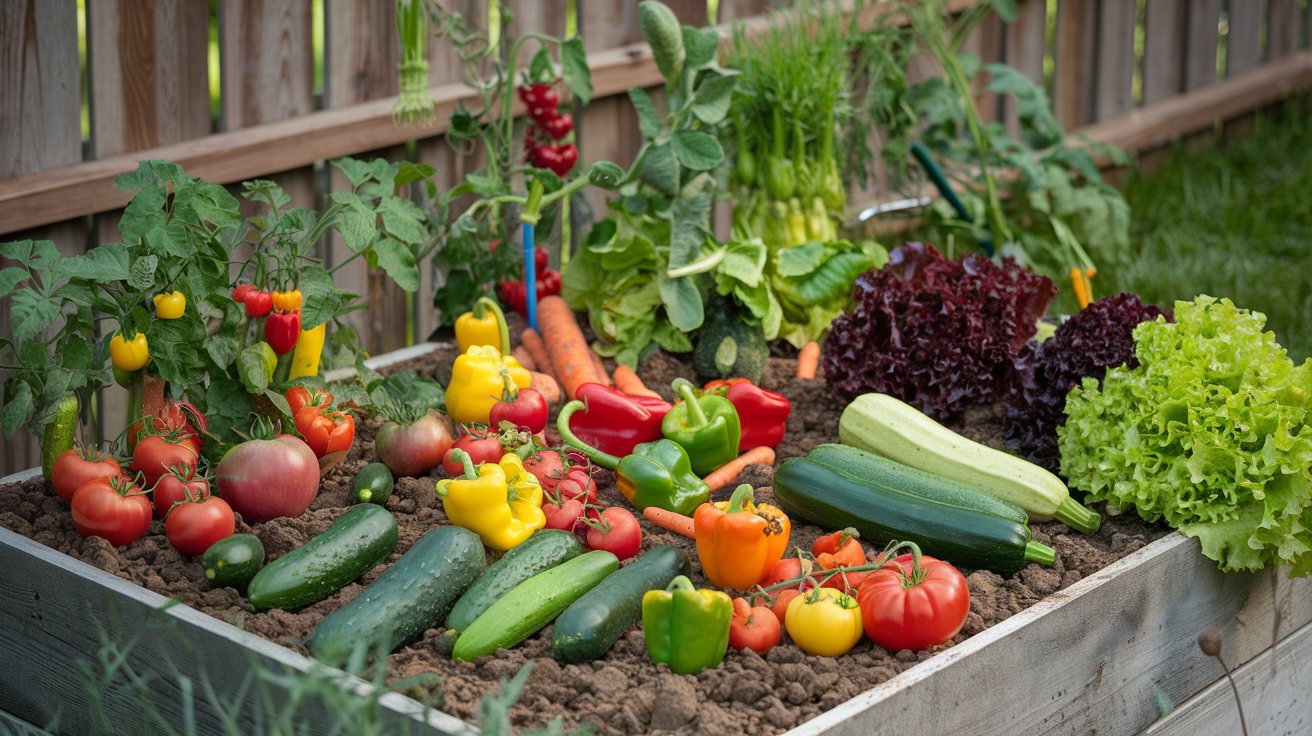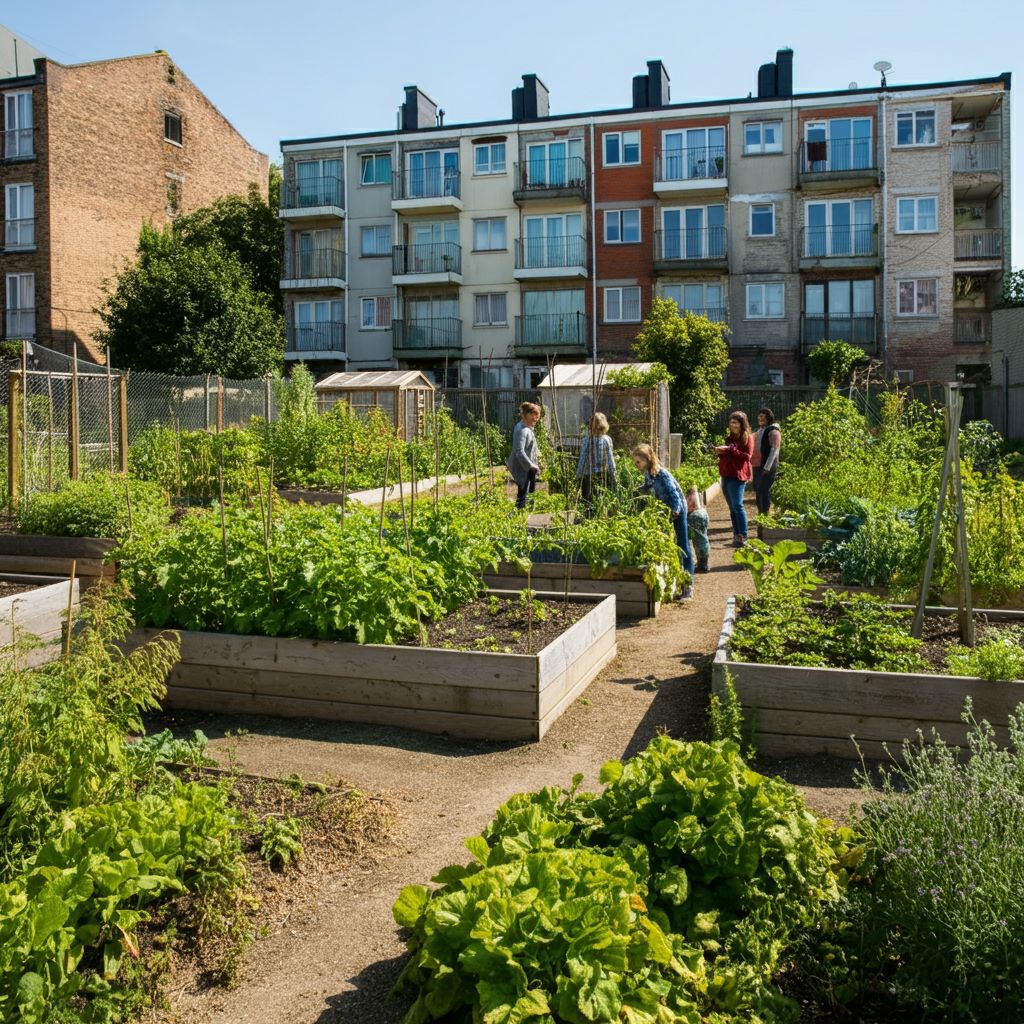Gardening can be one of the most fulfilling hobbies, offering not only the joy of nurturing plants but also the sense of accomplishment when you see the fruits (or flowers) of your labor. However, starting your garden journey requires the right tools, especially if you’re a beginner. Selecting the best gardening tools for beginners can make all the difference in terms of ease, comfort, and overall success.
In this guide, we’ll explore the essential gardening tools every beginner should have. From ergonomic trowels to durable pruners, these tools will help you work efficiently and comfortably, whether you’re growing vegetables, flowers, or a mix of both.
Key Takeaways
- The 10 best gardening tools for beginners will help you get started on the right foot.
- Understanding each tool’s purpose and how it benefits your gardening tasks.
- Learn how to select durable, lightweight tools to reduce strain.
- Practical tips for tool maintenance to extend their lifespan.
- Why ergonomically designed tools are essential for comfort during long gardening sessions.
Reading Time: 8 Minutes
Table of Contents
The Importance of Choosing the Right Gardening Tools for Beginners
Choosing the right gardening tools is more than just picking what looks good at the garden store; it’s about finding the ones that make gardening easier and more enjoyable. For beginners, the right tools can reduce the time spent on tasks, prevent injury, and ensure that your plants grow healthily. The importance of having high-quality tools cannot be overstated, especially when you’re starting out. Here’s why they matter:
- Time-Saving: Quality tools can help you work more efficiently, whether you’re digging, planting, or weeding.
- Comfort: Gardening can involve a lot of repetitive motions. The right tools with ergonomic handles reduce strain and make gardening more comfortable.
- Plant Health: Tools designed for specific tasks (like pruning) ensure that plants are treated gently, preventing damage to roots or stems.
10 Best Gardening Tools for Beginners You Can’t Live Without
What to Look for in Gardening Tools as a Beginner
When you’re selecting your first set of gardening tools, certain factors should influence your choice. Here’s a breakdown of the qualities to consider:
Comfort and Ease of Use
You’ll be using these tools frequently, so comfort is key. Look for tools with ergonomically designed handles to reduce hand fatigue, especially if you have a smaller or larger hand size. Tools with padded or rubberized grips can make a world of difference in preventing blisters and discomfort.
Durability and Materials
As a beginner, investing in durable tools is essential. Stainless steel blades, for example, offer resistance to rust and corrosion, while high-quality plastic handles can stand up to the wear and tear of outdoor use.
Price and Value for Money
High-end tools can be expensive, but you don’t necessarily need to splurge when you’re starting out. Aim for tools that offer a good balance of price and durability. Many mid-range options provide excellent quality without the high cost of professional-grade gear.
Tool Weight and Size Considerations
Choosing the right weight and size for your gardening tools is essential for both effectiveness and comfort. Beginners should opt for lightweight tools that are easy to maneuver, especially when working with limited strength or space.
The 10 Best Gardening Tools for Beginners You Can’t Live Without
The following tools are essential for every beginner gardener. These tools will help you complete basic gardening tasks like planting, weeding, watering, and pruning with ease.
1. Garden Trowel
The garden trowel is a versatile tool that is indispensable in every garden. Whether you’re planting small flowers, digging holes, or weeding, a sturdy trowel will do the job. Look for a model with an ergonomic handle for comfort and a stainless steel blade that resists rust.
Key Features:
- Ideal for digging and planting small plants.
- Helps with weeding in tight spaces.
- Lightweight and easy to maneuver.
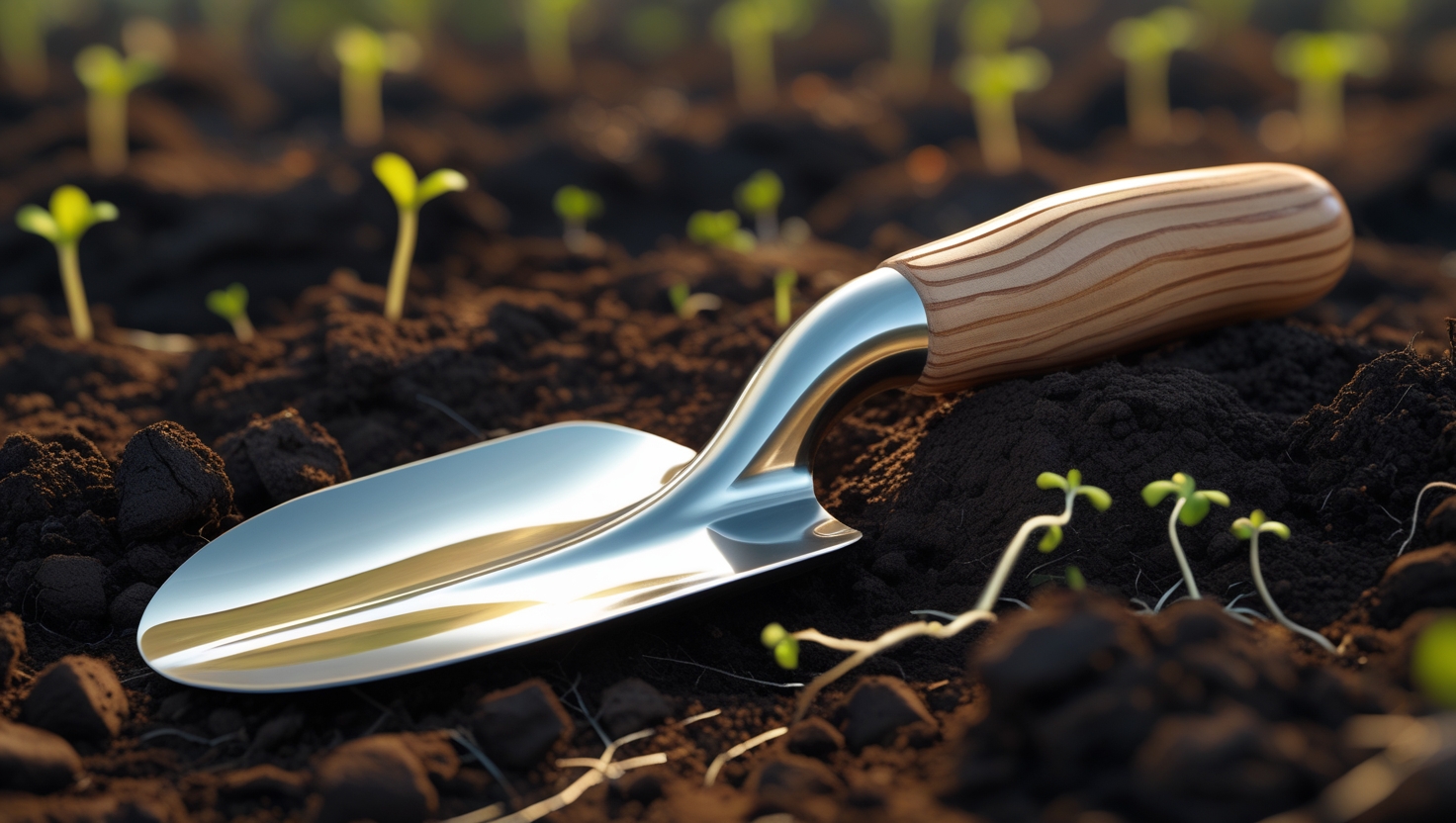
2. Hand Pruners
Hand pruners are perfect for trimming and shaping plants, especially shrubs, roses, and small branches. When shopping for pruners, look for ones with sharp, high-quality blades, and a spring-loaded mechanism for easy opening and closing.
Key Features:
- Essential for cutting back dead wood and encouraging healthy growth.
- A clean cut promotes faster healing for plants.
- Choose pruners with a locking mechanism for safety.
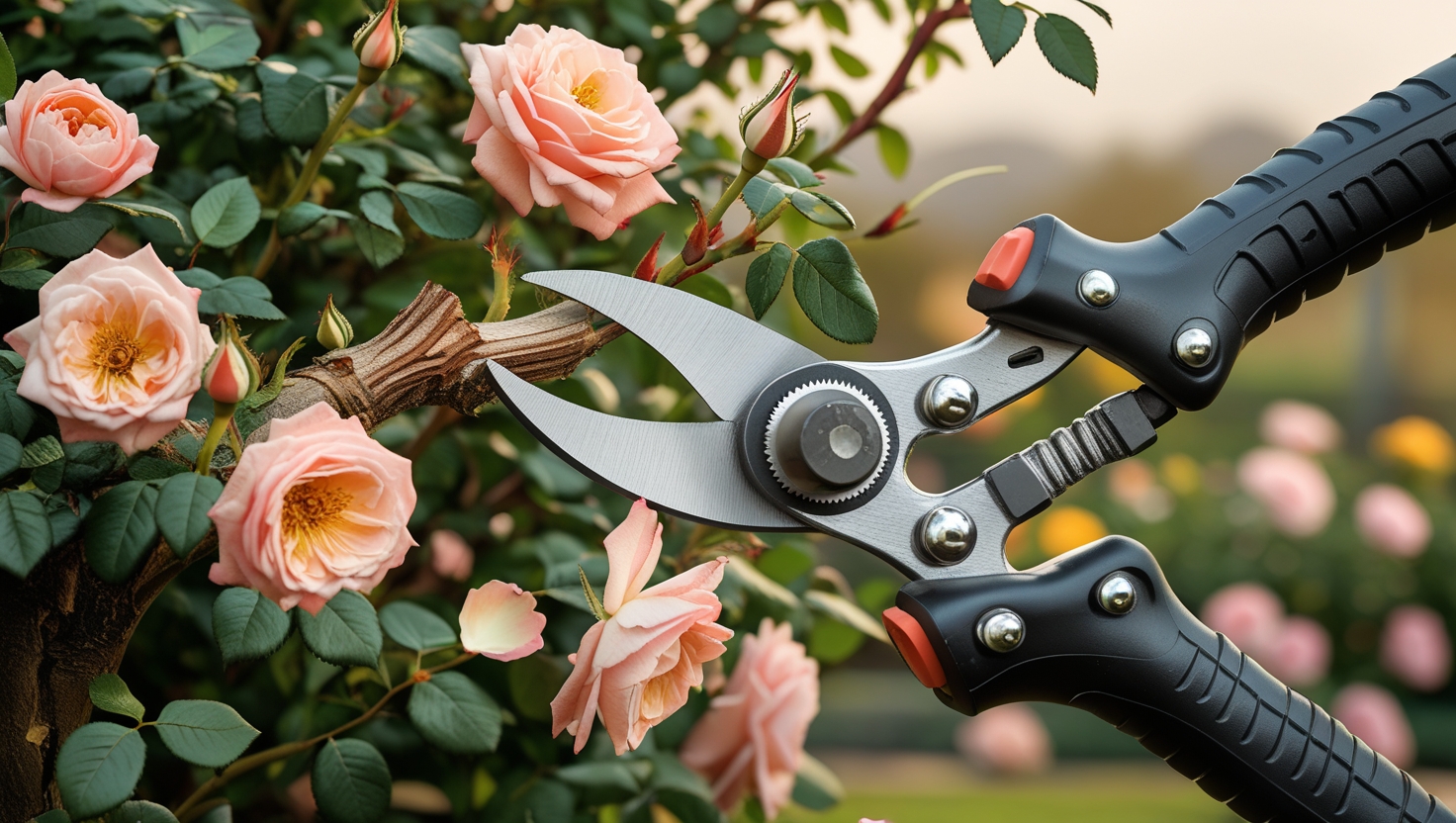
3. Spade
A spade is different from a shovel because of its flat blade, which is better suited for cutting through soil, digging holes, and edging garden beds. It’s perfect for planting larger plants or digging trenches for irrigation.
Key Features:
- Ideal for digging and transplanting plants.
- The flat blade makes it easier to cut through compacted soil.
- Provides greater control for digging precise holes.
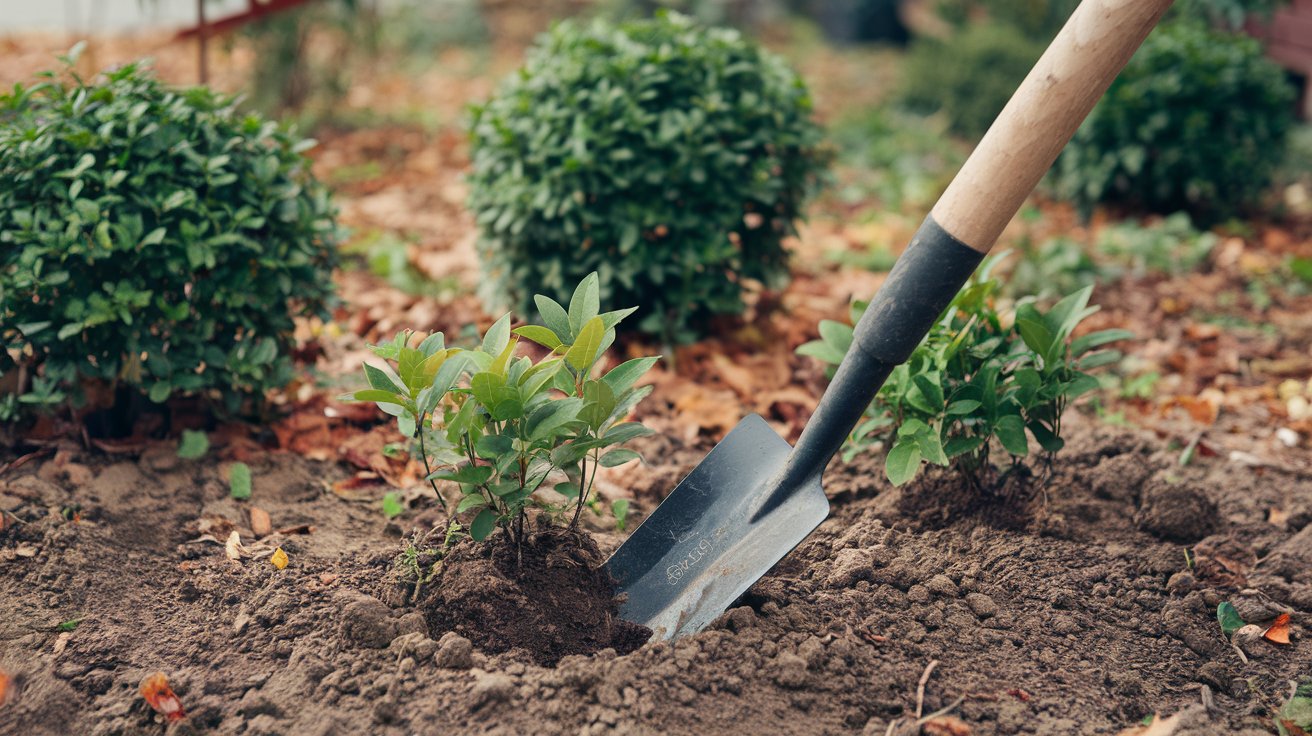
4. Rake
Rakes are essential for clearing debris such as leaves, grass clippings, and soil. A lightweight, adjustable rake works best for beginners, especially if you plan to work in a small or medium-sized garden.
Key Features:
- Great for leveling soil and collecting leaves or mulch.
- Adjustable rake heads offer flexibility for different tasks.
- Lightweight and easy to store.
5. Garden Hoe
A garden hoe is a classic tool that’s perfect for weeding and soil cultivation. By using a hoe, you can break up soil clumps and control weeds more efficiently, especially in larger garden beds. Choose a hoe that fits comfortably in your hand and features a durable head for long-lasting performance.
Key Features:
- Great for creating furrows and breaking up soil.
- Helps prevent weed growth by disturbing the soil surface.
- Long handle options for better reach.
6. Watering Can
A watering can allows you to deliver a gentle, even stream of water to your plants without over-watering them. Opt for a can with a long spout for targeted watering, especially for delicate seedlings and small plants.
Key Features:
- Best for precision watering without over-saturating plants.
- A comfortable handle reduces strain on your hand.
- Available in various sizes for different garden needs.
7. Gloves
Gardening gloves protect your hands from sharp objects, dirt, and chemicals, while also providing comfort during extended use. Look for gloves that are breathable, durable, and water-resistant for maximum protection and comfort.
Key Features:
- Protects hands from cuts, thorns, and chemicals.
- Waterproof or water-resistant materials keep hands dry.
- Lightweight and flexible for ease of movement.
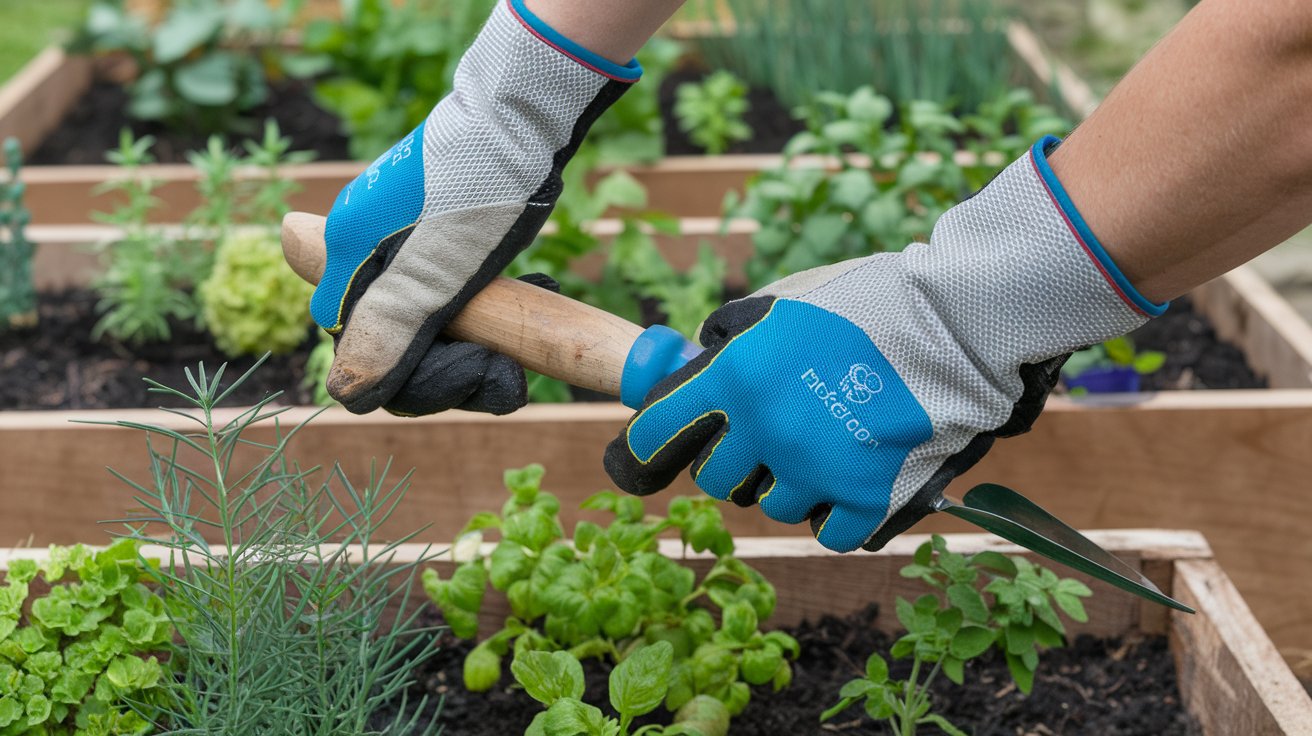
8. Garden Fork
Garden forks are excellent for loosening and aerating the soil. They are particularly useful when preparing your garden bed for planting or when turning compost. A sturdy fork with solid, pointed tines will make your soil work much easier.
Key Features:
- Great for breaking up hard soil and loosening compacted dirt.
- Effective for turning compost and aerating soil.
- Tines should be sharp and evenly spaced for better soil penetration.
9. Wheelbarrow
For moving larger amounts of soil, mulch, or plants, a wheelbarrow is invaluable. It helps you carry heavy loads quickly and efficiently without straining your back. Look for a model with a sturdy frame and a comfortable grip to make your gardening tasks easier.
Key Features:
- Aids in transporting materials around the garden.
- Choose a lightweight model for easier maneuverability.
- A large capacity helps reduce multiple trips.
10. Knee Pad or Garden Kneeler
Kneeling for extended periods can be hard on your knees. A knee pad or garden kneeler protects your knees from the rough ground and adds comfort to your gardening experience. Some kneelers even double as seats or storage for tools.
Key Features:
- Protects knees from pressure and injury.
- Some models double as seats for rest.
- Easy to fold and store for convenience.
How to Maintain Your Gardening Tools for Longevity
Gardening tools are an investment, and to ensure they continue to serve you well, it’s important to maintain them properly. Here’s how to care for your tools:
- Clean after every use: Remove dirt, soil, and sap from your tools with a damp cloth or hose.
- Sharpen blades: Regularly sharpen your pruners, trowels, and spades to maintain cutting efficiency.
- Store properly: Keep tools in a dry, cool place to prevent rust. Hanging tools up or storing them in a shed can prevent them from getting damaged by the elements.
Frequently Asked Questions
What is the best gardening tool for beginners?
A garden trowel is one of the best tools for beginners, as it is versatile and essential for many tasks, including planting and weeding.
Do I need all 10 tools to start gardening?
No, you can start with the basics: a trowel, gloves, and pruners. Over time, you can expand your toolkit as your gardening needs grow.
How can I make my gardening tools last longer?
Regular cleaning, sharpening, and proper storage will extend the life of your gardening tools.
Can I use a shovel instead of a spade?
A spade is better suited for digging and transplanting, while a shovel is typically used for moving dirt or other materials. A spade’s flat edge allows for more precise work.
What is the most important tool for beginners?
The garden trowel is arguably the most important tool for beginners because of its versatility.
Should I buy high-end tools as a beginner?
While professional-grade tools can be expensive, there are many mid-range tools that offer great value and durability without breaking the bank.
Conclusion
In conclusion, having the best gardening tools for beginners can transform your gardening experience. From ergonomic trowels to efficient hand pruners, each tool serves a specific purpose that makes gardening easier and more enjoyable. With these essential tools, you’ll be able to tackle any gardening task with confidence.
Author Bio:

Robert Martin is a passionate blogger and versatile content creator exploring the intersections of personal finance, technology, lifestyle, and culture. With a strong background in financial literacy and entrepreneurship, he helps readers make smarter money moves, build sustainable side hustles, and achieve financial independence.
Beyond finance, Robert shares his insights on home decor and gardening—offering practical ideas for creating beautiful, functional living spaces that inspire comfort and creativity. He also dives into the dynamic worlds of sports and celebrity news, blending entertainment with thoughtful commentary on trends that shape today’s pop culture.
From decoding the latest fintech innovations to spotlighting everyday success stories, Robert delivers content that’s informative, relatable, and actionable. His mission is to empower readers to live well-rounded, financially confident lives while staying inspired, informed, and ahead of the curve.

